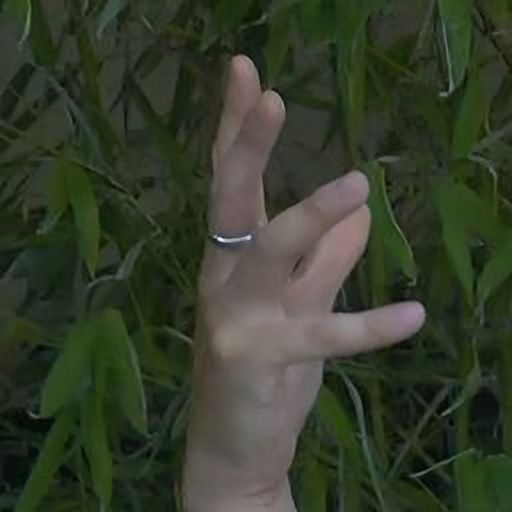#Carolin Duttlinger
Explore tagged Tumblr posts
Photo










#Locarno FF#Pardo#Locarno75#The Future of Attention#Basecamp#24-hour talk#Twitch#Khesrau Behroz#Abby Sun#Carolin Duttlinger#Laurie Anderson#Devika Girish#Helena Wittmann#Giona A. Nazzaro#Milosz Paul Rosinski#Hito Steyerl#Kevin B. Lee#festival life#daily life#audiovisual criticism#hands poetry#in defence of the poor image#screenshot#AI#Yoana Pavlova
3 notes
·
View notes
Text
Specters of Aura

Author ········· Taylor Dorrell Published ······ April 27, 2020
Walter Benjamin is perhaps best known for his formulation of the concept of aura and the place of art in the age of photography and mass reproduction. His formulation spans over the course of his work, most notably from his essay Little History of Photography to The Work of Art in the Age of Mechanical Reproduction. Benjamin develops aura as being a quality that does not necessarily lay in a piece of art’s visual aesthetics, but its relation to the viewer’s perception through the reproducibility and commodification of the context art exists within as well as its transcendent nature. However, this is not how the term is often understood. The definition is blurred in Benjamin’s uses of the concept in different essays and leaves readers confused with contradictions. However, after going through these different uses, we arrive, not in a broken state of contradiction, but at a more complete definition.
Misconceptions of Contradiction and the Dialectic
In both Little History of Photography and Art in the Age of Mechanical Reproduction Benjamin defines aura as something of a romantic experience that can be experienced in nature:
“A strange weave of space and time: the unique appearance or semblance of distance, no matter how close it may be. While at rest on a summer's noon, to trace a range of mountains on the horizon, or a branch that throws its shadow on the observer, until the moment or the hour become part of their appearance—this is what it means to breathe the aura of those mountains, that branch.” Walter Benjamin, The Work of Art in the Age of Mechanical Reproduction, 1935
This introduces a broad definition of aura that transcends art and photography. In addition, Benjamin also observes in Little History how earlier photography held a certain degree of aura back when the final product of a photograph was a single plate. He notes the limitations, time, and effort taken to make a photograph. However, this earlier essay is often read as contradicting his essay The Work of Art in the Age of Mechanical Reproduction. Here, Benjamin points to mechanical reproduction, or the ability to reproduce and distribute a work of art to the masses, which includes photography, as a dent to aura. Benjamin is painted as being anti-photography in his diagnosis of mechanical reproduction as a kind of ‘arbiter of death’ upon aura. This appears to be the first of two misconceptions in Benjamin’s definition of aura.
The first, that he completely disavows photography in his definition of aura (his essay is often oversimplified as a single statement as a disavowal of photography: “that which withers in the age of mechanical reproduction is the aura of the work of art.”), and the second, that he is set against democratic forms of art (even his essay has been discredited as elitist in form as “a deep fog of art historical mysticism”). The second is simply an exaggeration of the first, so let’s quickly dispel the oversimplification that Benjamin is anti-photography by acknowledging the complexity of his definition of aura (these misunderstandings also highlight a success of larger structures to obscure Benjamin’s formulations).
By observing that anything can have a certain degree of aura (Benjamin mentions nature, painting, and photography) and through reading his essays we see he constantly speaks of photographs in support of defining aura (observing how Atget photographed the neglected scenes of Paris, not the tourist destinations, and speaking at length of a childhood portrait of Franz Kafka). Benjamin is of course not as black and white as some seem to think, as he claims, “for the first time in world history, mechanical reproduction emancipates the work of art from its parasitical dependence on ritual. To an ever greater degree the work of art reproduced becomes the work of art designed for reproducibility.” We see that Benjamin is not making a moral claim about photography, but something much more foundational. This acknowledgement that Benjamin presents us a more complete definition of aura through his process of what seems like contradictions, giving us an expanded definition instead of a broken one, is where Carolin Duttlinger arrives in her essay Walter Benjamin and the Aura of Photography:
“Benjamin’s general theoretical claims are thus inseparable from a particular interpretative practice which lends his writings on the concept of aura depth and complexity. In this respect, Benjamin’s “Photography” essay forms the centerpiece of his theory of aura, not simply because it contains the earliest definition of the term but because it gestures beyond a narrowly historical definition of the term toward a more flexible and universally applicable model of aura as a phenomenon bound up with the act of viewing and reception. [...]
Rather than simply positing photography in clear-cut opposition to his concept of the aura, Benjamin’s writings thus bring photography and aura into constructive interplay. Not only is the notion of aura first developed in relation to early photography, but this historical model is subsequently revised and expanded in line with the evolving focus of Benjamin’s thought. In Benjamin’s memoirs and later essays, photography emerges as a medium of imaginary encounter despite, and indeed because of, the medium’s complicity with uniformity, conventionality, and reification. Within Benjamin’s childhood memories in particular, the model of a photographic aura facilitates a mode of literary engagement which, while arising out of theoretical reflection, is founded on a deeply personal, emotive form of photographic interpretation from which neither viewer nor image emerge unchanged.” Carolin Duttlinger, Walter Benjamin and the Aura of Photography, 2008
Duttlinger’s observations of Benjamin’s texts over his lifetime expand the definition of aura. Instead of seeing Benjamin’s two essays (Little History of Photography to The Work of Art in the Age of Mechanical Reproduction) as somehow canceling out his ideas, Duttlinger expands the pool of work to include Benjamin’s personal essays and reflections on photography and specific photographs. Duttlinger illuminates how aura cannot be limited to an oversimplified understanding of aura as ‘photography=bad’. We see that aura has not had a fair shot at being defined in all its complexity.

Here we are exposed to a dialectical definition of aura that does not see contradiction as the paralysis of a subject, but the support of one. Aura is defined in its totality, through Benjamin’s reflections on photography and his defining photography as the moment that fractures aura. We see the misconceptions of aura falling victim to the fracturing of his work instead of a dialectic reading of the totality.
“It does not comprehend the diversity of philosophical systems as the progressive development of truth as much as it sees only contradiction in that diversity. The bud disappears when the blossom breaks through, and one might say that the former is refuted by the latter. Likewise, through the fruit, the blossom itself may be declared to be a false existence of the plant, since the fruit emerges as the blossom’s truth as it comes to replace the blossom itself.” Georg Wilhelm Friedrich Hegel, Phenomenology of Spirit, 1807
While the blossom comes after the bud and the fruit after the blossom, the two seem to conflict with each other while at the same time are a part of the same whole, “their fluid nature makes them into moments of an organic unity in which they are not only not in conflict with each other, but rather, one is equally as necessary as the other, and it is this equal necessity which alone constitutes the life of the whole.” The same should be said of seeing Benjamin’s definition of aura conflicting with his reflections on the aura of photography. The two are a part of the same whole, the same totality, of the definition of aura.
Through defining photography as a means of reproduction establishing a relatively deductive, yet expansive, effect on aura (not a conclusive one), we see aura as a kind of spectrum that slides in intensity relative to the perception that’s affected by the degree of reproducibility available to the masses. With the reification of means of reproduction (images and reproductions overtaking even the notion of an original), aura finds itself at different intensities scattered across a new world of simulacra (copies without originals).
In talking of earlier photography, Benjamin establishes a definition of aura that slides in intensity relative to the degree of reproducibility available to the masses. It is only after the wet plate is surpassed by faster and more reproducible/affordable photographic methods that Benjamin holds earlier photography as having more aura than the forms that sought to simulate aura through artificial means (back then it was gum prints, today it is film and film filters, the same could be said for early photography and it’s reference to painting). Today, the mass production of smartphones and other devices with cameras and images have us looking to 35mm film as holding more aura in our current context.
The Spectrum of Aura: Kant and Zero Intensity (All Aura is Surplus Aura)
Benjamin’s definition of aura exists between his notions of cult value and display value. Cult value is the experience essential to the sense experience of something in its limited and ritual nature. Spirit, in all its complexities, is held higher than the availability to the largest number of people.
“We know that the earliest art works originated in the service of a ritual—first the magical, then the religious kind. It is significant that the existence of the work of art with reference to its aura is never entirely separated from its ritual function… One may assume that what mattered was their existence, not their being on view… The elk portrayed by the man of the Stone Age on the walls of his cave was an instrument of magic. He did expose it to his fellow men, but in the main it was meant for the spirits.” Walter Benjamin, The Work of Art in the Age of Mechanical Reproduction, 1935

(A lifesize replica of the Lascaux Cave in France) Another room in the Lascaux 4 museum (Mehdi Fedouach/AFP/Getty Images)
The intent is not in its ‘exhibition value’, but something more. The creation and presentation is not meant to be witnessed by the most amount of people possible, which changed with the marketized spread of mechanical and technological reproduction. The cave paintings were meant more so for the spirit than mass human consumption. This is made apparent in the 1963 closing to the public of the Lascaux Cave in France, where prehistoric paintings were found preserved until opened to the public when carbon dioxide and other factors caused by the thousand daily visitors started to damage the paintings. This led to the closing off to the public and restoration of the paintings, but also the creation of replicas of specific paintings for galleries, of course we can now photos online, and even a guided tour on the website.
“...the technique of reproduction detaches the reproduced object from the domain of tradition. By making many reproductions it substitutes a plurality of copies for a unique existence. And in permitting the reproduction to meet the beholder or listener in his own particular situation, it reactivates the object reproduced. These two processes lead to a tremendous shattering of tradition which is the obverse of the contemporary crisis and renewal of mankind.” Walter Benjamin, The Work of Art in the Age of Mechanical Reproduction, 1935
As we see, Benjamin is not taking sides here, but observing that an increase in display value in art can affect the cult value and degree of tradition or spirit. Benjamin’s definition of aura is an observation of what’s taking place and not an endorsement of one side or the other. Examining this complexity, John Berger said, ”For the first time ever, images of art have become ephemeral, ubiquitous, insubstantial, available, valueless, free”. As Benjamin observes, film is a medium that minimizes aura that would be more abundant in theatre. Today with online streaming, we see how the availability and reductions limit the degree of aura in experiencing film. But with the withering of aura is also an illumination of the higher degree of aura now experienced in prior forms. Going to the movie theater today, while still might hold less aura to the perception of those who lived before Netflix, nonetheless holds a higher experience of aura in its ritualistic and limited nature than watching the film on a laptop at home.
Benjamin was writing about photography in the early 1930s, only 90 years after the Daguerreotype process was announced. The first time direct representations of reality were stored on physical plates to be looked at anytime. The technology at the time he’s writing is limited to the first editions of the Leica and a few decades after the brownie, but 35mm film and brownies were vastly different and more available than the first processes of early wet plate photography. We see the intensity changes based on the accessibility and implementation of mediums, which highlights an important point. Aura does “wither” in the perception of the viewer as society develops and implements new forms of mass reproduction, but it doesn’t disappear (as Benjamin highlights by speaking of photography’s aura so often).
Today for example, we are constantly engaging with reproductions of reproductions of reproductions. I heard a quote from one of those internet entrepreneurs who said, “I don’t engage with the thing, I engage through people engaging with the thing”, referring to never watching sports or other live events, but only looking at the tweets about the events. Art is increasingly experienced through mediums of accelerated display value (books, google images, instagram, etc.) so that we are distanced farther from the Thing when we are at the same time, most close to it (sitting at home watching the commentary version of our favorite film, behind the scenes, 4K quality, etc.). “Every day the urge grows stronger to get hold of an object at very close range by way of its likeness, its reproduction.” (Benjamin)

So we see that aura is a spectrum that shifts based on the technological reproducibility of art. When reproducibility is more effective and available, there is a loss of cult value and tradition, but at the same time established the former techniques as holding more of these aspects than the newest form. It’s clear that aura, even when it withers, is then never completely absent. This is the same Kantian notion of Anticipations of Perceptions, which gives us a better understanding of how to gauge aura.
“In all appearances the sensation, and the real, which corresponds to it in the object, has an intensive magnitude… every sensation, thus also every reality in appearance, however small it may be, has a degree, i.e., an intensive magnitude, which can still always be diminished, and between reality and negation there is a continuous nexus of possible realities, and of possible smaller perceptions. Every color, e.g., red, has a degree, which, however small it may be, is never the smallest, and it is the same with warmth, with the moment of gravity, etc.” Immanuel Kant, Critique of Pure Reason, 1781
Kant sees the intensive magnitude as “flowing” based on the time and experience. The only universal promise beforehand is that there is a degree, but experience is required to measure the intensive magnitude at that moment. The individual, or the particular, experience is the gauge, but is dependent on the bigger picture (the forms of reproducibility and impact on the particular). Since it can only be measured at a moment in time, it is constantly flowing and never ending. Flowing between the particular, universal, space, time, and perception in relation to all. To tie it back to Hegel, the process is a never ending synthesis as it constantly changes and blossoms into something else.
Following Kant’s line of thought, it is impossible for us to find a complete lack in our perception as we could not, by definition, perceive it. While there are higher degrees of aura that have withered and dragged by mediums founded on display value, there is always an intensive magnitude of aura. The degree of perception sets the intensive magnitude of aura. Since there is no real base or normal that can be experienced, all aura having a degree, we see that all aura is surplus aura. Slavoj Zizek arrives at this same conclusion in terms of all enjoyment being surplus enjoyment:
“It is this paradox which defines surplus-enjoyment: it is not a surplus which simply attaches itself to some 'normal', fundamental enjoyment, because enjoyment as such emerges only in this surplus, because it is constitutively an 'excess'. If we subtract the surplus we lose enjoyment itself, just as capitalism, which can survive only by incessantly revolutionizing its own material conditions, ceases to exist if it 'stays the same', if it achieves an internal balance.” Slavoj Zizek, The Sublime Object of Ideology, 1989
Aura, as with capitalism, is constantly revolutionizing itself, constantly shifting the intensity, always as surplus. There is no resting point for aura, yet the constant evolution, in its inherent surplus, is the ‘normal’. Any attempt to rupture the constant flowing would then be subsumed into the spectrum itself. Revolution is absorbed to form a larger definition and the intensive magnitude is shifted.
Specters of Aura: The Fetishism of Images
In speaking of perceptions of objects that possess this transcendent intensive magnitude that is more than just the object, we are following what Marx called commodity fetishism, or the fact that concealed under art and commodities is the mystery of its value and the labor process involved with it. An absolutely fundamental aspect of what effects aura is the attributes that affect its market value. Underneath the reproduced piece of art, a Mona Lisa poster for example, is the labor and machinery involved in mass producing a poster of the painting. Whereas the painting formally existed as a single art object, which only concerned the hand of the artist, the poster anonymously conceals the hands of hundreds if not thousands to make the reproduction available for purchase online or in the Louvre’s gift shop for a rather affordable price. What is concealed under the perception of aura is this same process. It is invisible, yet haunts the way that we experience art in its democratic forms. In a way, what is hidden underneath looks back at the viewer. The work of art looks at us with a gaze of its own. Aura is a part of this gaze, a kind of specter. Jacques Derrida observes (and we have observed by establishing there is never a total absence of aura), a specter that haunts is in no way dead. Derrida calls this hiding of the gaze, a visor effect:
“Nor does one see in flesh and blood this Thing that is not a thing, this thing that is invisible between its apparitions, when it reappears. This Thing meanwhile looks at us and sees us not see it even when it is there. A spectral asymmetry interrupts here all specularity. It de-synchronizes, it recalls us to anachrony. We will call this the visor effect: we do not see who looks at us. Even though in his ghost the King looks like himself (“As thou art tothy selfe,” says Horatio), that does not prevent him from looking without being seen: his apparition makes him appear still invisible beneath his armor (“Such was the very Armour he had on...”).” Jacques Derrida, Specters of Marx, 1993
The visor effect for the specter of aura conceals the fact that the age of mechanical/technological reproduction has drastically changed the field of perceiving aura. Aura must remain mysterious. Underneath these forms of mass reproduction are of course corporations selling your data, monitoring your moods to know when to advertise you what commodities, etc. The visor is the tool that is constantly shielding the specter. It is essential for the specter of aura to stay mysterious in order for the structures that promote and accelerate mass reproduction to maintain their status over cult value. As Zizek has pointed out, although we can expose what’s underneath, our actions tend to then disavow the acknowledgement (after the Snowden revelations, Cambridge Analytica, every leak exposing big tech as misusing our data, etc. we change nothing in our daily lives), establishing the power and utilization of the visor effect. It can look at us, we can think that we see it, but then do absolutely nothing to change it. This is why misunderstandings of Benjamin’s contribution of defining aura supports this visor effect and hides the fact that we have done nothing to bring real change, because we cannot in the first place acknowledge what is happening.

Screenshot of Christie’s website selling Andy Warhol’s prints of Mona Lisa for $56,165,000
Benjamin’s definition of aura establishes a vocabulary for confronting art in the age of modernity and whatever we call our current times. Aura is withering today, even while technology can garner a higher appreciation, or a perceived ‘passion for the real’, for traditional forms and mediums, they are already affected by their relation to images of images. The Mona Lisa can only be experienced behind layers of bulletproof glass and hundreds of tourists taking photos and we can only see it in relation to all of the reproductions we had seen beforehand. We are left standing in this mosh pit of tourists thinking, “hmm, I thought it would be bigger”. Aura is an invisible, constantly shifting specter that moves with the never ceasing flow of capital. All is subsumed and shifts our perception.
“So long as the movie-makers’ capital sets the fashion, as a rule no other revolutionary merit can be accredited to today’s film than the promotion of a revolutionary criticism of traditional concepts of art. [...] Mankind, which in Homer’s time was an object of contemplation for the Olympian gods, now is one for itself. Its self-alienation has reached such a degree that it can experience its own destruction as an aesthetic pleasure of the first order. This is the situation of politics which Fascism is rendering aesthetic. Communism responds by politicizing art.” Walter Benjamin, The Work of Art in the Age of Mechanical Reproduction, 1935

A two-page spread from Dlya golosa(For the Voice) by Vladimir Mayakovsky, designed by El Lissitzky, 1923.
#walter benjamin#aura#the work of art in the age of mechanical reproduction#a little history of photography#kant#hegel#derrida#photo theory#photo#photography#theory#capitalism#communism#john berger#atget#kafka#andy warhol#mayakovsky#el lissitzky#carolin duttlinger#taylor dorrell#giphantie#journal#jiphantie#jiphanty#jifanie#jifanty#gifanty#giphanty#essay
7 notes
·
View notes
Text
In effect, then, Benjamin’s theorization of photography as a harbinger of death is the result of what might be a deliberate misattribution.
1 note
·
View note